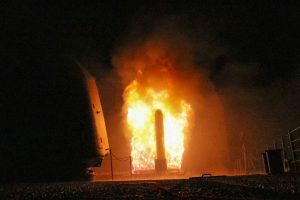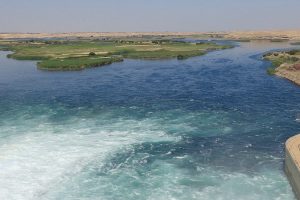A spokesperson for the US-led Coalition told Grasswire that “there is insufficient evidence to find that civilians were harmed” after a March airstrike on a school in Mansoura, near Raqqa.
The strike assessment was completed and the results were published in the monthly report July 7. Based on the information available to our assessment team, they have assessed that there is insufficient evidence to find that civilians were harmed in this strike.
CJTF-OIR spokesperson
According to the Monthly Civilian Casualty Report released on July 7, the civilian casualty assessment and reporting team reviewed all available information and strike video.

Grasswire has closely followed this incident since it occurred. The date of the strike appears unclear because it happened at night. The Coalition determines the date as March 20, but others say March 21.
Geo-locating “Al Badia” school near Raqqa, reportedly bombed by coalition aircraft
On March 22, the London-based Syrian Observatory for Human Rights said at least 33 internally displaced people were killed in the airstrike.
Airwars, a group that documents civilian casualties in Iraq and Syria, investigated dozens of claims around the strike on the school, assessing the collective information as “Fair”. It includes a list victims named by local groups and monitors in its report.
However, Lieutenant General Stephen Townsend, commander of Combined Joint Task Force-Operation Inherent Resolve, told reporters on March 28 that his “initial read” was that the airstrike on the school killed dozens of Islamic State militants and not civilians.
“We had multiple corroborating intelligence sources from various types of intelligence that told us the enemy was using that school,” Townsend said.
“Afterwards, we got an allegation that it wasn’t ISIS fighters in there; got a single allegation it wasn’t ISIS fighters in there; it was instead refugees of some sort in the school. Yet, not seeing any corroborating evidence of that. In fact, everything we’ve seen since then suggests that it was the 30 or so ISIS fighters that we expected to be there.”
UN commentary
In its third situation report on Manbij and Raqqa published on April 18, the UN Office for the Coordination of Humanitarian Affairs said airstrikes hit the school while an estimated 25-30 displaced families were inside, adding that the school has hosted “a number of displaced families from Palmyra and Homs for the last three years.”
Linda Tom, spokesperson for OCHA Syria, told Grasswire on July 9 that the agency was not in a position to directly verify attacks nor their origin, but that the agency reports on “alleged or reported attacks as part of the overall narrative of how fighting is impacting civilians.”
“Whenever possible, information on attacks on civilian and civilian infrastructure is triangulated from several sources and verified with partners on the ground,” Tom said. “In the case of places like Raqqa where fighting is active, reporting and information collection is a challenge.”
On March 23, Geert Cappelaere, UNICEF Regional Director, said reports that the agency had received indicated that 12 children had been killed in the strike.
Juliette Touma, UNICEF’s Regional Chief of Communications, told Grasswire on July 9 that Cappelaere’s statement was based solely on reports and that UNICEF had no independent confirmation of the events.
“We have a strict verification process at unicef and unless we are able to verify incidents in our public communication, we use ‘reports’ only,” Touma said.
CJTF-OIR civilian casualty assessments
The Coalition spokesperson told Grasswire that the assessment team now consists of nine members, seven full-time and two part-time. The group consists of subject matter experts in law, aviation, intelligence, imagery and civil affairs to assist in assessing all reports as thoroughly as possible.
The new team is more than double its previous size. In June, Coalition spokesperson Col. Ryan Dillon told the Washington Post that the addition of five new full-time team members was intended to improve the team’s response time.
“The team assesses allegations as the information is provided from outside sources, or from pilot self-reports,”, the spokesperson told Grasswire, adding that they “may open a previously closed assessment if more information becomes available.”
Asked if the team visits strike sites, the spokesperson said they have “the ability to conduct on-the-ground assessments in Iraq and Syria should that be necessary for specific incidents.”
“We hold ourselves accountable with an open and transparent process to assess allegations of civilian casualties, and we publish these findings on a regular basis for the world to see,” the spokesperson added.
Syrian Observatory for Human Rights’ reliability “has been found wanting” – Coalition






